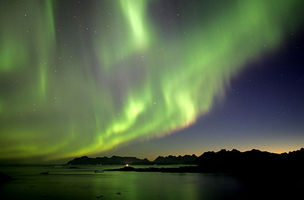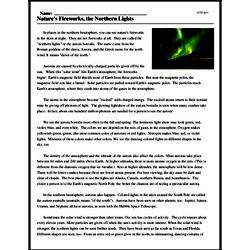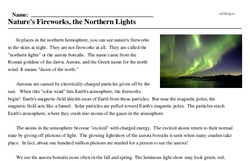Nature's Fireworks, the Northern Lights
In places in the northern hemisphere, you can see nature's fireworks in the skies at night. They are not fireworks at all. They are called the "northern lights" or the aurora borealis. The name came from the Roman goddess of the dawn, Aurora, and the Greek name for the north wind. It means "dawn of the north."
Auroras are caused by electrically-charged particles given off by the sun. When this "solar wind" hits Earth's atmosphere, the fireworks begin! Earth's magnetic field shields most of Earth from these particles. But near the magnetic poles, the magnetic field acts like a funnel. Solar particles are pulled toward Earth's magnetic poles. The particles reach Earth's atmosphere, where they crash into atoms of the gases in the atmosphere.
The atoms in the atmosphere become "excited" with charged energy. The excited atoms return to their normal state by giving off photons of light. The glowing lightshow of the aurora borealis is seen when many crashes take place. In fact, about one hundred million photons are needed for a person to see the aurora!




